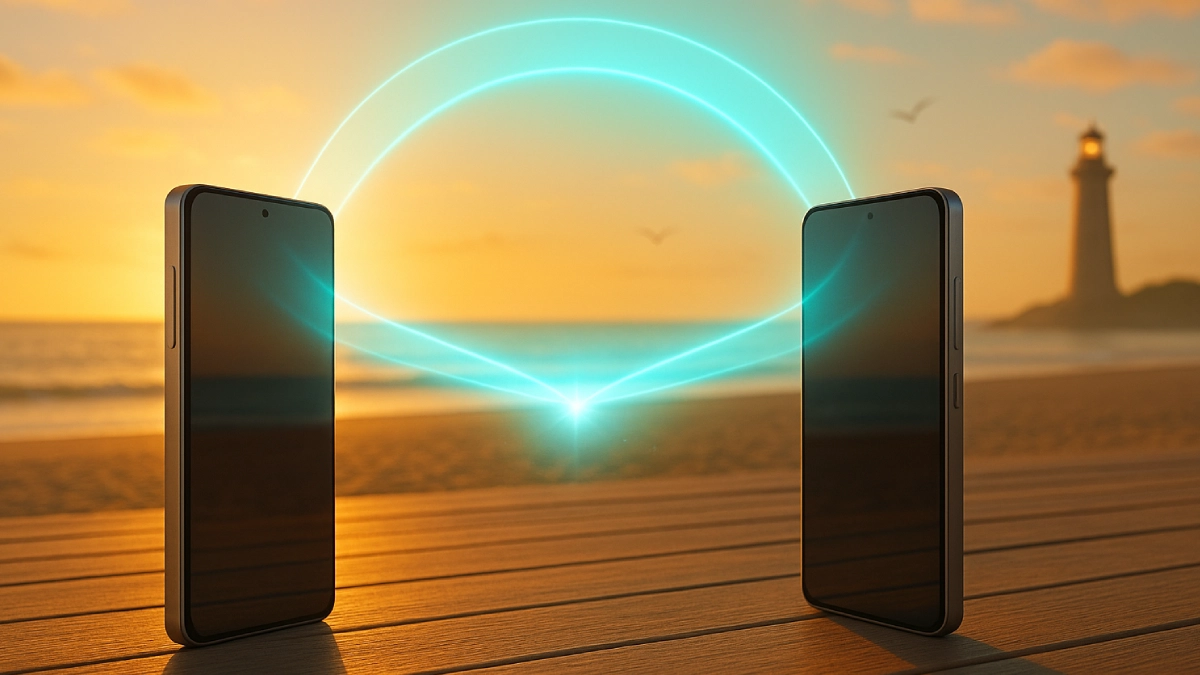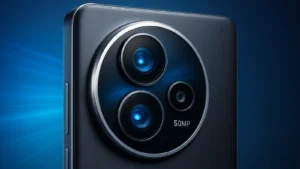Xiaomi has introduced phones that can place voice calls without mobile networks by creating a direct device‑to‑device link between compatible 15T series devices, functioning like a long‑range, voice‑first walkie‑talkie. The promise is straightforward: when towers and Wi‑Fi fail, two nearby phones can still talk directly, with practical range shaped by line‑of‑sight and environment.
The lighthouse analogy
Imagine each Xiaomi 15T as a coastal lighthouse with an unusually strong lamp that signals directly to another lighthouse—no city grid, no phone lines, just light across open water. The “lamp” here is an amplified short‑range radio path built atop Bluetooth‑class signaling, tuned by custom hardware and a high‑performance antenna array, so two lighthouses can exchange voice in the dark even when the grid (cellular/Wi‑Fi) is down. Like real lighthouses, range is best across clear horizons; buildings, hills, and forests absorb the beam and shorten calls.
What actually powers it
This Offline Communication sits inside Xiaomi’s broader “Astral Communication” suite—hardware and firmware that optimize the radio front end for Wi‑Fi, Bluetooth, GPS, and cellular, enabling a direct phone‑to‑phone voice link without joining any network. The feature currently works between 15T‑family devices, underscoring that it’s a proprietary, peer‑to‑peer link rather than a standards‑based public feature. It’s positioned as a flagship differentiator, not a lab experiment, and is enabled via system software with supporting radio hardware.
What it is not
It is not satellite calling, which depends on orbiting relays and can work over vast distances but typically supports limited messaging on mainstream phones and voice only on specialized handsets. It is not a general mesh either; there’s no guarantee of multi‑hop relaying through strangers’ phones to reach beyond line‑of‑sight. It also isn’t universal Bluetooth calling that any phone can join; the extended range and reliability come from Xiaomi’s specific antennas, tuning, and software, so compatible devices on both ends are required.
Where it shines
The sweet spot is off‑grid or congested areas where small groups coordinate nearby: hiking partners splitting on a trail, event crews across a venue, road‑trip caravans, or families on a cruise deck avoiding shipboard fees. In open, unobstructed environments, range can be significantly longer than typical short‑range links; in obstructed or noisy environments, expect much shorter distances. For scenarios where walkie‑talkies are often issued, a pair of compatible phones can remove extra gear—so long as conditions and compatibility are met.
Trade‑offs and caveats
- Range is highly environmental: quoted distances are maximums in open line‑of‑sight; urban canyons, dense foliage, or hills can cut them dramatically.
- It’s a closed loop: both ends need compatible Xiaomi phones with Offline Communication, making it best for groups standardizing on the same lineup.
- It doesn’t replace normal telephony: think of it as a fallback, not an everywhere‑to‑everyone dial tone or an emergency service.
How it compares to satellite features
Satellite on mainstream smartphones today skews toward emergency or limited messaging with regional constraints, slow throughput, and usage caveats. Offline voice, by contrast, is instantaneous and high‑fidelity within a local bubble—but only between compatible devices and only within a kilometer‑scale envelope shaped by terrain and interference. In simple terms: satellite is sparse but far‑reaching; offline voice is local but immediate.
Why this matters now
Resilient communications are becoming a new differentiator beyond camera bumps and AI filters. A hardware‑led radio edge—custom tuners and antenna arrays—offers tangible benefits in weak‑signal zones and enables direct fallback when infrastructure disappears. For many buyers, a reliable off‑grid backchannel can be more useful than a marginal camera spec uplift.
What to watch next
- Broader interoperability across Xiaomi’s lineup could turn the “two 15Ts” requirement into a brand‑wide local voice mesh over time.
- Satellite features may expand on mid‑range models, complementing offline voice for true dead zones where no peer device is in range.
- The most practical future is hybrid: device‑to‑device voice when close, satellite messages when far, and standard calls when coverage returns.
Practical takeaways
- For small teams or families standardizing on compatible Xiaomi phones, offline voice offers a walkie‑talkie‑like backchannel without extra radios or fees in open spaces.
- Treat range claims as ceilings; field‑test in the actual environment before relying on it for coordination or safety‑adjacent tasks.
- Keep true emergency options—like satellite messengers or PLBs—in the kit for wilderness and disaster scenarios; this feature is a convenience layer, not a life‑saving service.
Last Updated on October 18, 2025 by Lucy




